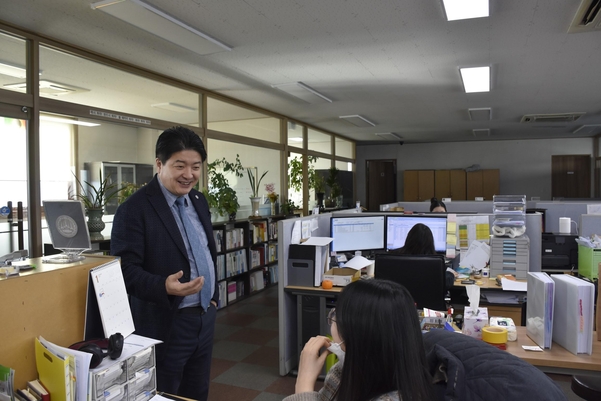Input 2021.01.24 08:00
Representative Cho Hyun-il “It’s a pity for a Korean company to be swung over abroad because I don’t know optics
“I asked what kind of space optics research institute would be made by a small and medium-sized business in the vicinity. Now, 10 years of achievements have taken root, making it the busiest department.”
Cho Hyun-il (53), CEO of Green Optics, came back after witnessing that 10,000 Chinese companies participated in the optical exhibition held in Shanghai, China in 2011, and set up the Space Optical Research Institute. CEO Cho said, “I thought it was a threatening situation even if only 10% of Chinese companies survived 10 years later,” he said. “I thought about producing high-definition ultra-precision optical systems and jumped into space optics.”
Green Optics, founded in 1999 by CEO Cho, makes various optical products used in industrial, military, medical, and satellite applications such as semiconductors and displays. Optical products are produced by being modularized into lenses, mirrors, and filters. The business was expanded to space through precision products and defense industries. Sales in 2019 were 25 billion won. 70% of sales come from industrial optics, but most of the money earned is devoted to space optics R&D.

Green Optics entered the space optics field in 2013 by manufacturing camera lenses for domestic science and technology satellites. In 2016, it was recognized for its technology by supplying cameras for space missions to the National Aeronautics and Space Administration (NASA). Two years later, it supplied the Indian Space Agency (ISRO) with a 1m-class optical lens for earth observation cameras.
He said, “In India, including precision products, there is a contract of over 15 million dollars, so it is enough to run the factory 24 hours.” .
In Korea, it cooperates with the National Research Institute. The Korea Aerospace Research Institute supplied high-performance cameras for the’moon exploration project’, which is aimed at the second half of next year. It is mounted on a satellite that orbits the moon and observes the lunar surface. A telescope that observes dark galaxies will be built and supplied to the Astronomy and Space Research Institute.
CEO Cho said, “With the advent of SpaceX, the era in which the private sector is leading space development has opened.” “Space is now moving to the realm of business, not for research purposes.” He took the laser optical communication satellite as an example.
A European aerospace consortium is underway, launching more than 10,000 laser-optical commercial satellites to enable faster communication between satellites and ground objects or satellites. Green Optics supplies stockpiling aspherical lenses, a key component, to Sodern, a member of this consortium. The industry estimates this market at 300 billion won per year.

CEO Cho continued to localize optical products in Korea, which was no less than an optical wasteland. A foreign company went to a large company that bought a product made by processing 170,000 won at a Sonata price and offered a replacement product, but was rejected. As the exchange rate jumped due to the IMF foreign exchange crisis, the wind of localization in Korea blew up.
“There are too many companies that are ripped off by foreign companies because they don’t know optics,” he said. “If you localize the optical parts of imported equipment, the equipment will be half priced and the competitiveness of domestic companies will increase.” He explained that PCR (gene amplification) equipment, mobile phone OLED optical parts, and infrared zoom cameras have improved competitiveness through green optics.
In the field of defense, it developed a tracking sensor module that corresponds to the eyes of guided missile shrines and bowels, and localized missile evaluation equipment imported from Russia. CEO Cho said, “Because there is no changeable optical book, I translated more than 100 overseas applications and worked on localization and technology development with employees,” he said. “It takes a long time for investment and effort to lead to results.”
In this context, the history of the growth of German and Japanese companies through the support of the state in the early days of the optical industry has implications. CEO Cho said, “Optics is a field that must be nurtured in the country due to the industrial structure. I hope that there will be more opportunities for companies to utilize the optical equipment of national institutions.”
